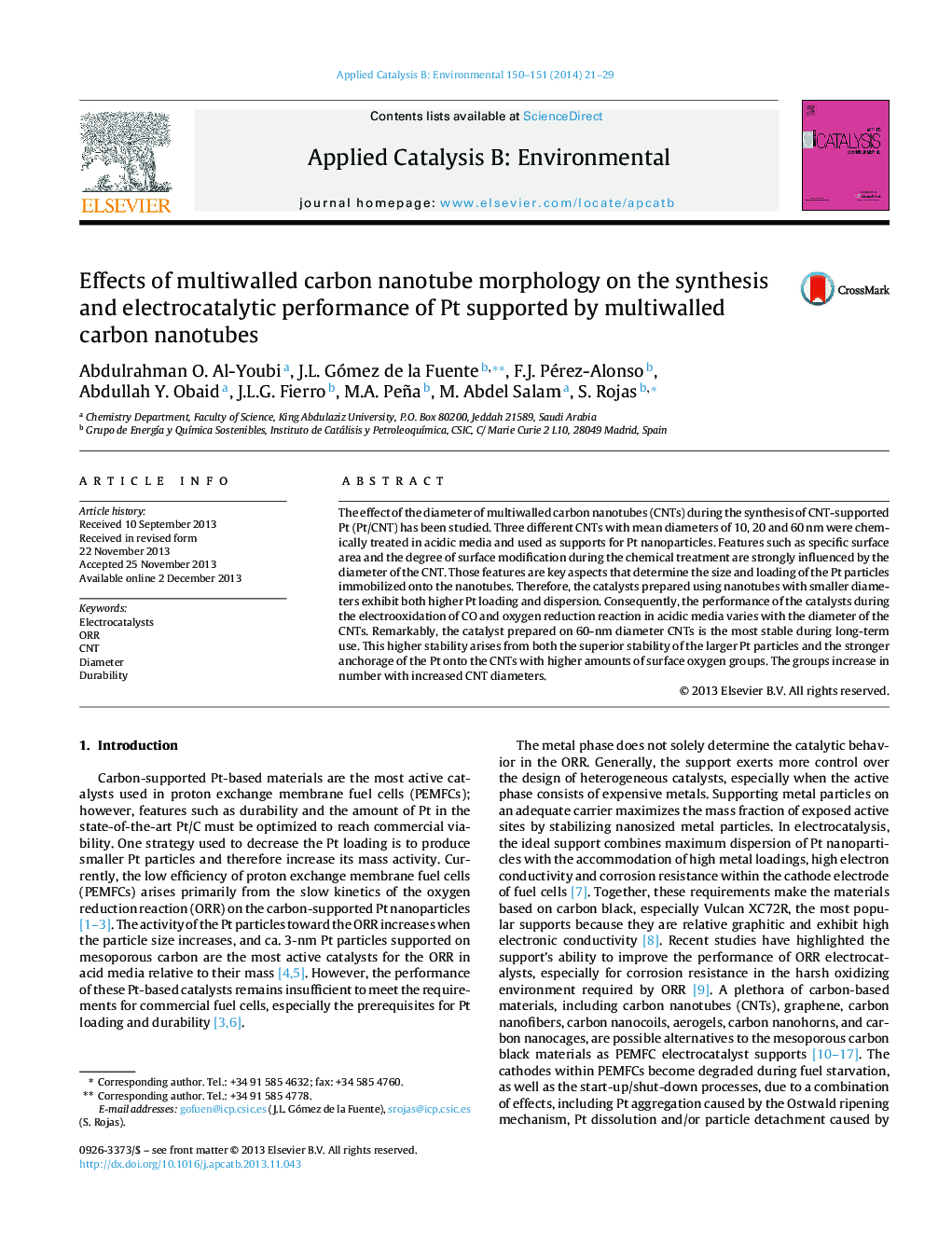| Article ID | Journal | Published Year | Pages | File Type |
|---|---|---|---|---|
| 45905 | Applied Catalysis B: Environmental | 2014 | 9 Pages |
•Surface anchoring groups vary with CNT diameter and surface area.•Pt loading increases with the decreasing CNT diameter.•Pt size decreases with the increasing CNT diameter.•The ORR performance of Pt/CNTs increases with the increasing CNT diameter.
The effect of the diameter of multiwalled carbon nanotubes (CNTs) during the synthesis of CNT-supported Pt (Pt/CNT) has been studied. Three different CNTs with mean diameters of 10, 20 and 60 nm were chemically treated in acidic media and used as supports for Pt nanoparticles. Features such as specific surface area and the degree of surface modification during the chemical treatment are strongly influenced by the diameter of the CNT. Those features are key aspects that determine the size and loading of the Pt particles immobilized onto the nanotubes. Therefore, the catalysts prepared using nanotubes with smaller diameters exhibit both higher Pt loading and dispersion. Consequently, the performance of the catalysts during the electrooxidation of CO and oxygen reduction reaction in acidic media varies with the diameter of the CNTs. Remarkably, the catalyst prepared on 60-nm diameter CNTs is the most stable during long-term use. This higher stability arises from both the superior stability of the larger Pt particles and the stronger anchorage of the Pt onto the CNTs with higher amounts of surface oxygen groups. The groups increase in number with increased CNT diameters.
Graphical abstractFigure optionsDownload full-size imageDownload as PowerPoint slide
